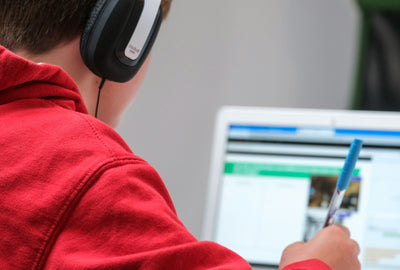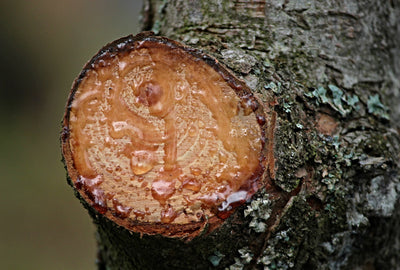Have you often come across the term pixel graphics? You have a vague idea what it is, but want to learn more about pixel graphics? Here we explain what they are used for and show you the advantages. How can pixel graphics be optimized? Which settings are important? Read everything you need to know about pixel graphics here.
What is pixel graphics?
A pixel graphic, also known as a bitmap or raster graphic, consists of individual pixels arranged according to a specific grid. They are each assigned a colour or a colour value. The totality of the pixels, also known as a picture element, picture cell or picture element, describes an image. If you take photos with your digital camera or your smartphone, you create a pixel graphic.
One of the main features is the size of this image file. The higher the pixel density, the sharper the image. In addition to the number of colours (colour depth), the number of pixels (image resolution or size) determines the size of the file and the required storage space. Since the pixels can be used to display complex colour gradients, pixel graphics are perfect for displaying digital images and presentations.
What is the difference between vector and pixel graphics?
![]()
While pixel graphics are composed of individual pixels, vector graphics consist of mathematically calculated areas, lines and polygons. Are you familiar with the term graphic primitives from your maths class? This name stands for the elements that make up vector graphics.
Pixel graphics are ideal for the detailed representation of digital images. The total number of pixels determines the image quality and the storage space required. Pixel graphics cannot be scaled without loss. The possible degree of enlargement depends on the image resolution.
The greatest advantage of vector graphics is their lossless scalability. In addition, they only require a small amount of storage space. The image build-up is quick. Vector graphics can be easily edited and converted into pixel images. If you want to have a large banner printed, vector graphics are the first choice.
If you want to display logos and fonts in XXL format, you are on the safe side with vector graphics. If, on the other hand, you use pixel graphics with too low a resolution, it can happen that fonts are difficult to read. Undesirable staircase effects can also occur.
Advantages of pixel graphics:
- Image display, particularly rich in detail
- ideal for complex colour gradients
- every single pixel can be edited
- is supported by many programs
Disadvantages of pixel graphics:
- Scalability tied to resolution
- Subsequent colour adjustments difficult
- Files larger than vector graphics
- high quality requires a lot of disk space
- Difficult to convert to vector
How does the resolution affect the quality of the pixel graphics?
![]()
The quality of a pixel graphic depends on the resolution. The finer the grid, the higher the quality of the image. As a rule of thumb: At a normal reading distance of around 25 centimetres, the dots in a pixel graphic with a relative resolution of 300 dpi (dots per inch, dots per inch) can no longer be seen separately from one another with the naked eye.
How does colour depth affect colour accuracy?
The colour depth, also called data depth, describes the number of bits available for colour information. If eight bits are assigned to each colour channel in an image in the red-green-blue system (RGB) with 24 bit depth, 16.77 million colours are created. The colour depth of an image can be set using an image editing program, for example to 8, 16 or 32 bits per channel.
For comparison: If you were to scan an image with a colour depth of only one bit in greyscale, each pixel could only be black or white. With eight bits, 256 shades of gray are already available, which enables a smooth transition from black to white. The colour depth therefore has a decisive influence on the colour accuracy.
What graphics formats are used for pixel graphics?
The file formats PNG, JPEG, TIFF, GIF and BMP are most commonly used for pixel graphics. PNG (Portable Network Graphics) is particularly widespread. It is recommended for lossless image compression and allows transparency. JPEG (Joint Photographic Expert's Group) is particularly popular with photographers. It also allows various subformats and path embedding. TIFF (Tagged Image File Format) supports the CMYK colour space and is considered to be extremely versatile. GIF (Graphics Interchange Format) is suitable for simple animations, but is not suitable for colour photos, as this format can only display 256 colours. For the sake of completeness, BMP (Windows Bitmap) should also be mentioned. However, its low compression is an exclusion criterion for many users.
Where are pixel graphics most commonly used?
Pixel graphics show their strengths, especially in digital direct printing and sublimation printing. Colour and brightness values can be easily edited and converted. Colour gradients can also be displayed precisely. Typical examples are photos taken with a digital camera or images produced by a scanner. You can also use pixel graphics when engraving with the Mr Beam laser cutter. If you want to cut materials, you need vector graphics.
Which tools and programs for creating pixel graphics?
![]()
Adobe Photoshop, Gimp, PaintShop Pro and Fireworks, for example, are particularly popular image editing programs for pixel graphics. The top dog, Photoshop, contains all the tools you need to create professional-quality pixel graphics. The enormous range of functions does not make it easy for beginners to get started. However, there are countless tutorials for intensive self-study. Photoshop is also an industry standard. If you master this program, you can also benefit from your knowledge professionally.
As a free alternative to Photoshop, we recommend Gimp, an open source image editing program. Here, too, numerous plugins are available to adapt Gimp to your individual needs.
Supporting both pixel and vector graphics, PaintShop Pro photo editor includes everything you need for professional photo editing at an affordable price. However, it is only suitable for Windows operating systems.
Adobe Fireworks enjoys great popularity among web designers as it is a real classic. The program supports all major graphic formats and allows for pixel-precise editing.
Image editing programs for pixel graphics are available for every requirement and every budget. If you start with a free version, you will quickly find out which functions you actually need. This protects them from expensive bad buys.
How can file size and loading time be optimized?
High-quality photos, characterized by many pixels and high colour depth, require a lot of storage space. With suitable compression methods, however, you can significantly reduce it. Image content is combined or changed. This manipulation remains hidden from the viewer.
Pixel graphics are often responsible for the slow loading of websites. Compression enables you to save up to 50 percent in data volume. This is particularly easy to do online. Websites such as ILoveIMG or CompressJEPG offer you the option of uploading images and then downloading them in compressed form. If you often want to reduce images, you can use programs like TinyPic or Image Resizer. The compression succeeds in a few seconds.
What should be considered when exporting pixel graphics?
If you want to export pixel graphics to social media, you first have to choose the right image format. For Instagram, for example, you then choose JPEG and an edge length of 1080 pixels. For Facebook, you use 2048 pixels on the long edge. If you ignore these specifications, Instagram and Facebook will adapt your pixel graphics, which can have a negative effect on the image quality. If you want to export pixel graphics for websites or print, you must observe the specifications of the provider or the printer. Image size, file format and colour depth must be matched to the respective requirements if the result is to be convincing. With the appropriate image editing programs, you can easily make these adjustments.
Tips and tricks for creating high-quality pixel graphics
If a small file size is more important to you than achieving maximum image quality, then you should use the JPEG format. The compression is high, but associated with data loss.
PNG files, on the other hand, allow for lossless compression. If the file size is not an issue, they are the first choice.
With a colour depth of 32 bits, the TIFF format enables particularly high-quality image files that are characterized by an unadulterated display.
Colours appear bright and intense on the monitor because it has its own light source. If the pixel graphic is printed on a t-shirt or other product, this effect fades as the print merely reflects the light. You should therefore increase the contrast and colour saturation of your pixel graphics before exporting. What may seem exaggerated to you on the screen promises an optimal print result.
The systems of many print shops work exclusively with the RGB colour space. If you export CMYK files, there is a risk of significant colour deviations. If you are unsure about the size, colour depth or file format, you should contact your service provider. This protects you from nasty surprises.


